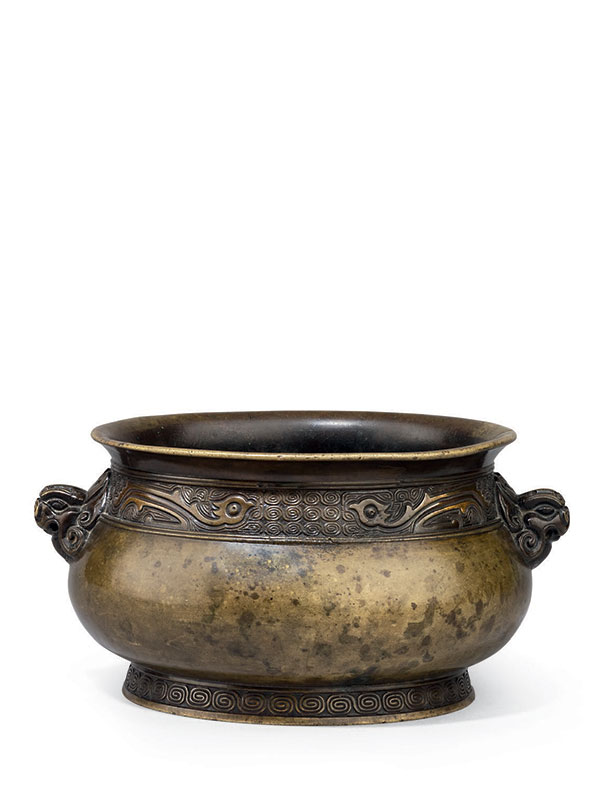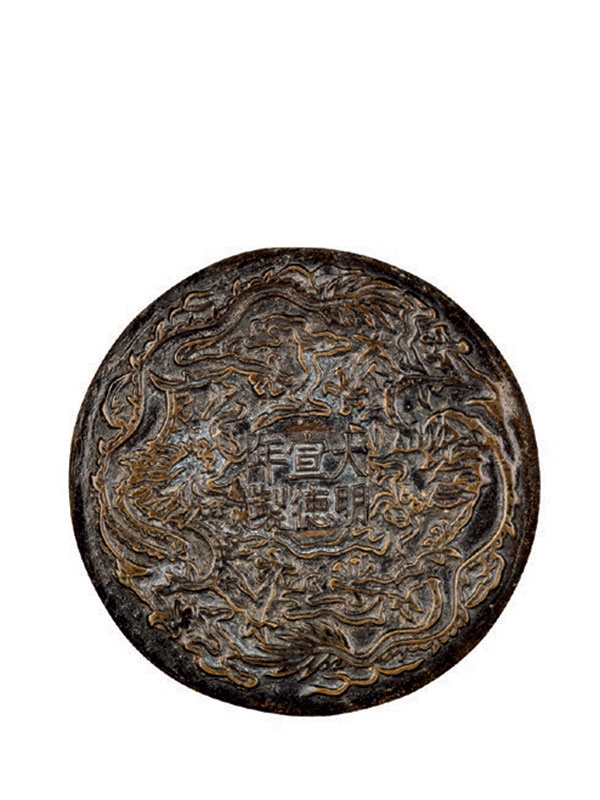Bronze censer of gui form
A bronze vessel of rounded bowl form, supported on a short, splayed foot. The body is cast with two protuberant handles, each in the form of a lion’s head. Around the neck is a ribbon-like band of four stylised birds, two on each side, facing each other. The rest of the band is filled in with a continuous scrolling key-fret pattern, which is repeated around the foot. The recessed base is cast with a six-character mark Da Ming Xuan De Nian Zhi (‘made in the Xuande era of the Great Ming’) in a rectangle, which is surrounded by two five-clawed dragons in relief. The bronze has a predominately yellowish patina, with some darker areas.
Incense burners of this type are normally placed on an altar table during a religious ceremony. The shape, originally derived from a late Shang or early Zhou bronze vessel form called gui, represents the archaism of the later dynasties. Although the dating of this type of censer is challenging, together with the apocryphal Xuande (1426 – 1435) reign mark, the stylistic indicators here point out that it is of the Qing dynasty. A closely comparable bronze censer of gui type with the same six-character apocryphal Xuande mark, slightly smaller in size and partially gilded on the pattern, is in the collection of Steven Hung and Lindy Chern.[1]
Provenance: private collection, UK
1 Huang, K-N. Chinese Incense Burners, the Collection of Steven Hung & Lindy Chern, The National Museum of History, Taipei, 2000, no. 115, p. 142
銅簋式爐
清 十七 – 十八世紀 「大明宣德年製」底款
寬:17.5 公分 高:8.8 公分
簋式銅爐,深圓腹,圈足,口沿外撇。頸腹間兩側安突起獅首把,爐頸鏨飾對翼鳥紋,下襯雷紋 ; 圈足 外壁鏨飾雷紋一周。圈足底面鏨刻五爪龍紋一對,中捧「大明宣德年製」方框底款。紋飾鏨刻錯落有 致,器型仿自高古青銅簋,古樸雋雅,兼以本器銅色經久把玩愈顯古意,油光冉冉。


